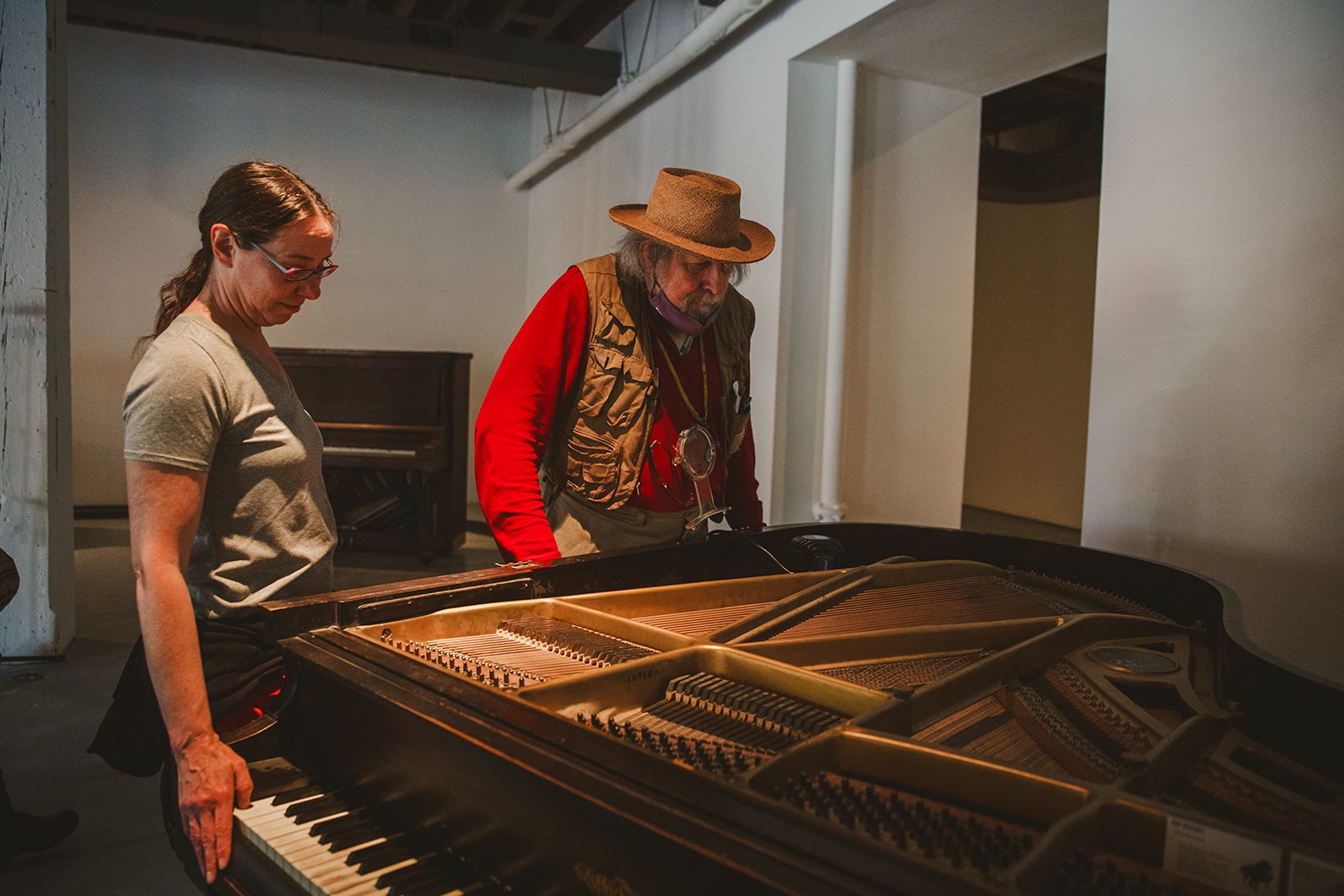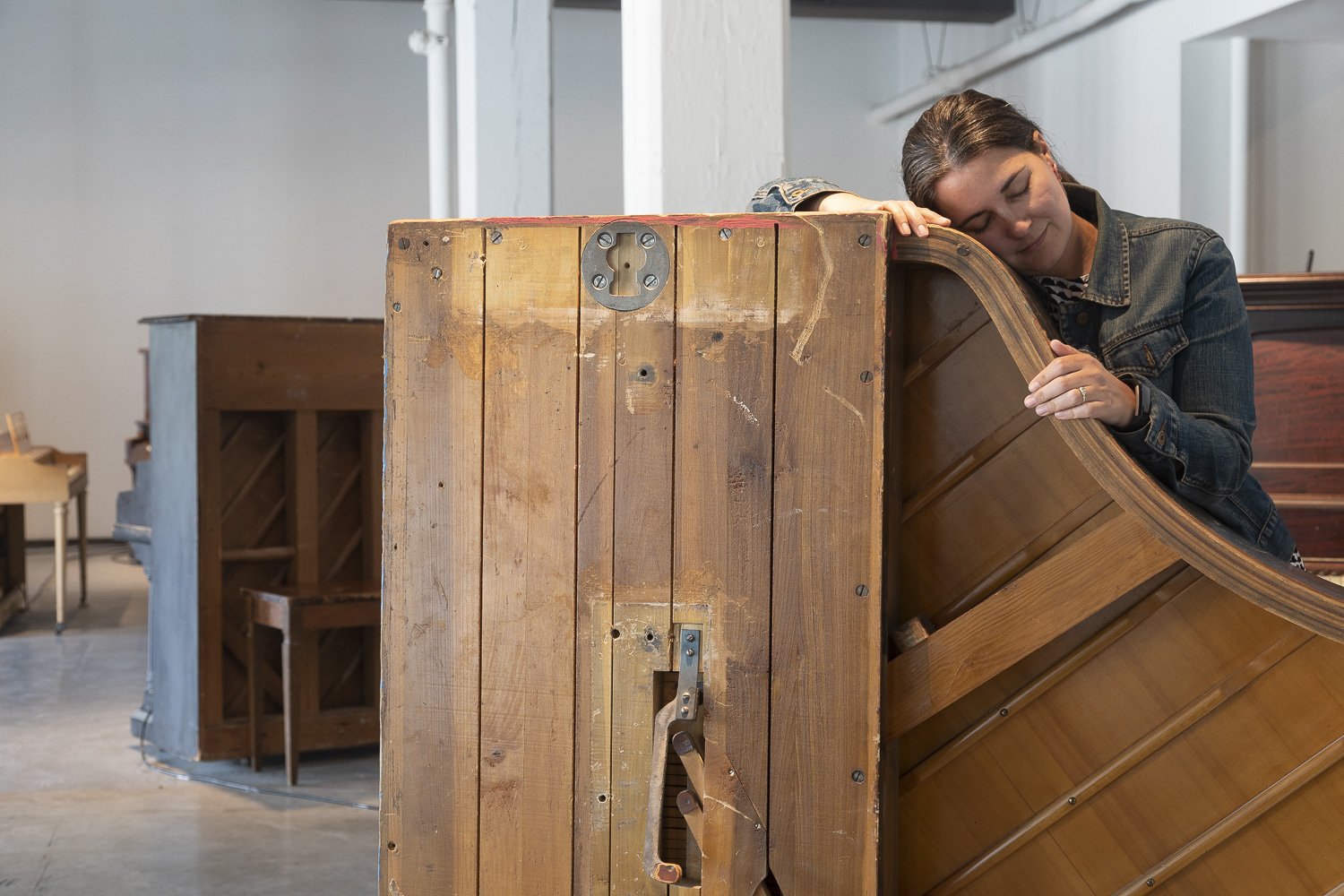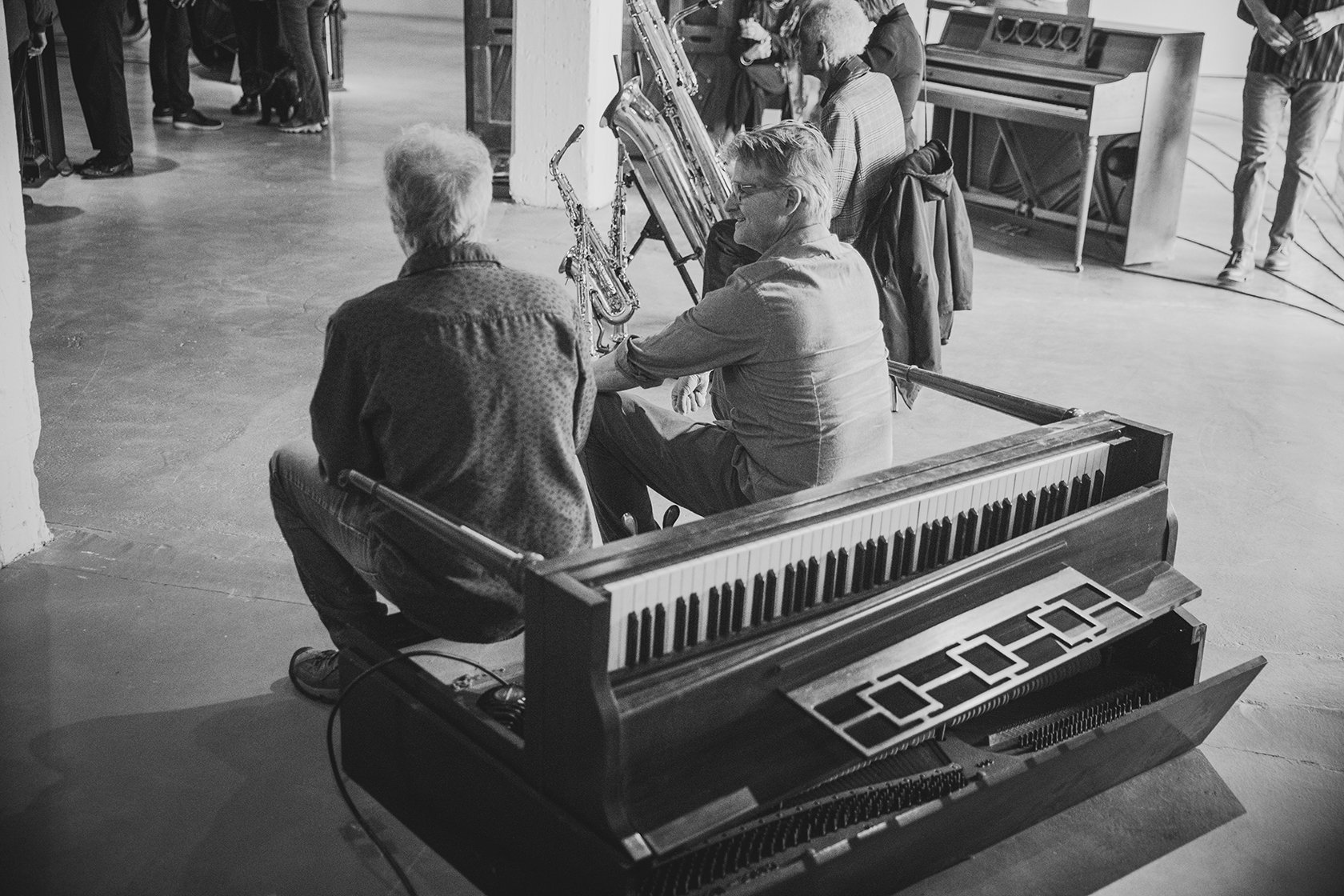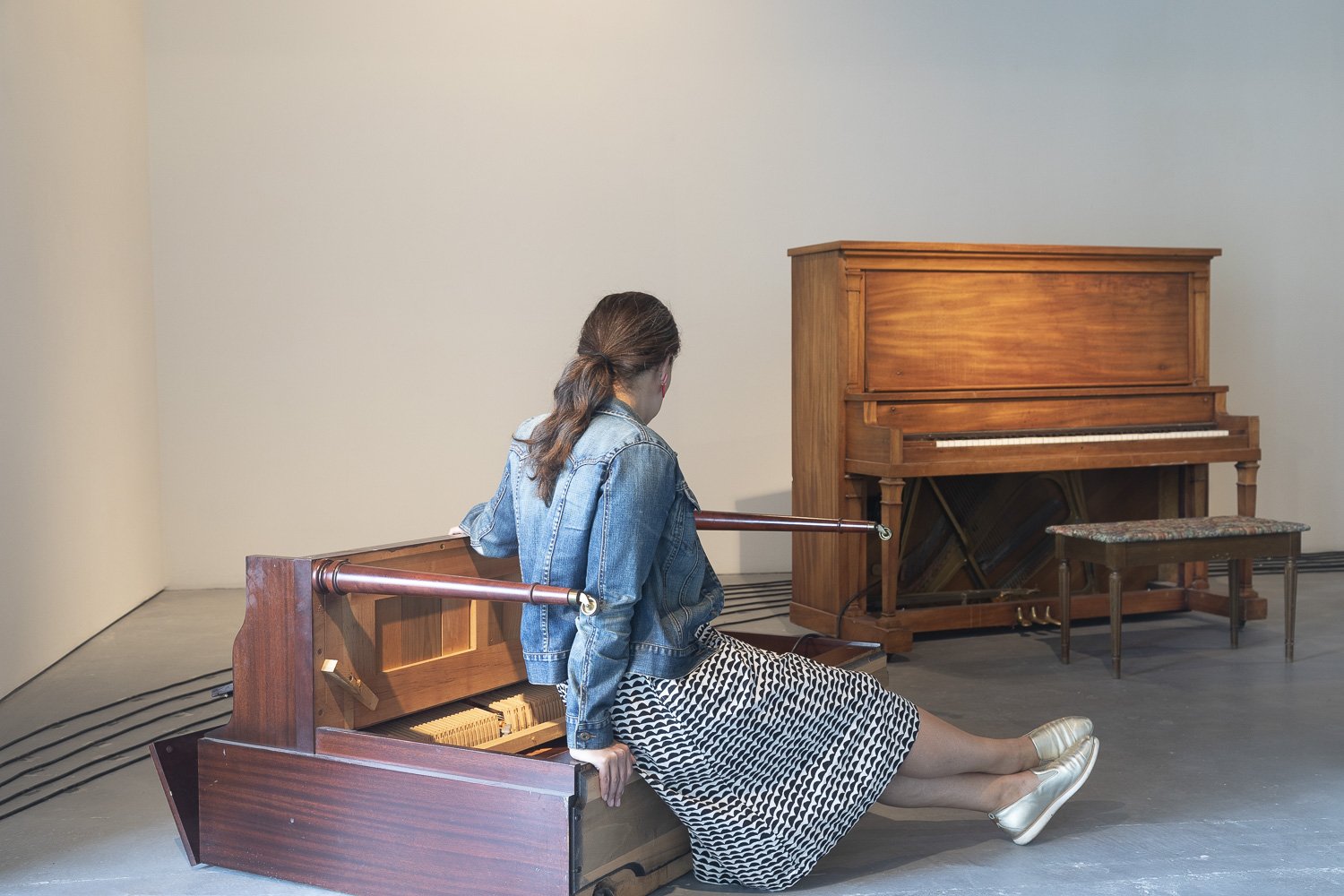Courtesy of Bemis Center for Contemporary Arts
√2
About √2 by Rachel Adams, curator of Bemis Center for Contemporary Arts:
In 2016, Dunietz, who has had an ongoing relationship to the piano since the age of five, drilled a piano with a buttkicker, physically changing it by altering its body and its voice. This launched her investigation into creating and exhibiting √2 (2022)—consisting of seventeen pianos, first proposed to me in 2018. √2, which was preceded by Trembling Piano (2016) and Mammoths (2019-2021), with five pianos, is the largest number of pianos in which Dunietz felt she had conjured a herd–who spend their second life humming, roaring, shaking and radiating out the composition through their bodies. When one walks through the installation, or places their body on or against a piano as it speaks, the body of the visitor mixes with the sound of the pianos which mixes with the architecture of the space—creating an entirely new experience and unique sound. While the square root of two is an irrational number, the title suggests that this work deals with the impossible and the unreachable. In reality, the work allows for sound to penetrate one’s psyche, allowing each visitor space and time to reflect on both past, present and future.
At Bemis, the pianos dot the gallery, grouped in families and couples. Beginning at a young age, Dunietz per- formed contemporary repertoire and with this specific work, she expands on her personal history with the piano while also referencing historical experimental works by John Cage with prepared piano, Joseph Beuys with Infiltration for Piano (1966), and Annea Lockwood’s Piano Transplants (1968–72). A prepared piano has sounds temporarily altered by placing objects on or between the strings, such as bolts, screws, rubber erasers. Lockwood’s Piano Transplants are iconic compositions and site-specific installations that also expand on the history of the piano as an object and instrument. Taking pianos that were beyond repair, Lockwood burned, drowned and planted them in English gardens, focusing on elemental and natural sound sources and interdisciplinary interventions, where the piano became played by its environmental and contextual circumstance.* With Beuys, Infiltration for Piano became about silencing. Covering the instrument with gray felt, he condemned it to silence. In √2, Dunietz removes the shackles from the instrument and frees their voices. An algorithm makes the pianos’ frequencies perpetually move back and forth in search of the ultimate musical middle point–a process that leads them to be in constant movement due to the nature of this irrational number. Dunietz rethinks the pianos’ usage to create a complex microtonal sound, to find each piano’s unique raw sound–the sound of its resonating wooden-body roaring with all its might. She resurrects each piano and by removing the human
* “Annea Lockwood: Piano Transplants - Piano Burning, Piano Garden & Piano Drowning,” Issue Project Room, accessed April 24, 2022, https://issueprojectroom.org/event/ annea-lockwood-piano-transplants-piano-burning-piano-garden-piano-drowning







√2, 2022
Seventeen pianos with low-frequency transducers, amplifiers. 240-minute loop.
Computer programming and additional composition by Daniel Meir.
Courtesy of the artist.
A part of Maya Dunietz: Root of Two exhibition at Bemis Center
Another part of the √2 project is a special edition of vinyl recording of a nuclear family of 5 vibrating pianos. It was recorded during the “Five Chilling Mammoths – The Infinite Decimal” exhibition at FracPaca museum, Marseille in 2018.
The album was released as vinyl with the support of The Artists Residency and Bemis Center for Contemporary Arts. The album was also digitally released by TAKUROKU, the cafe OTO’s home label.
Purchase:
